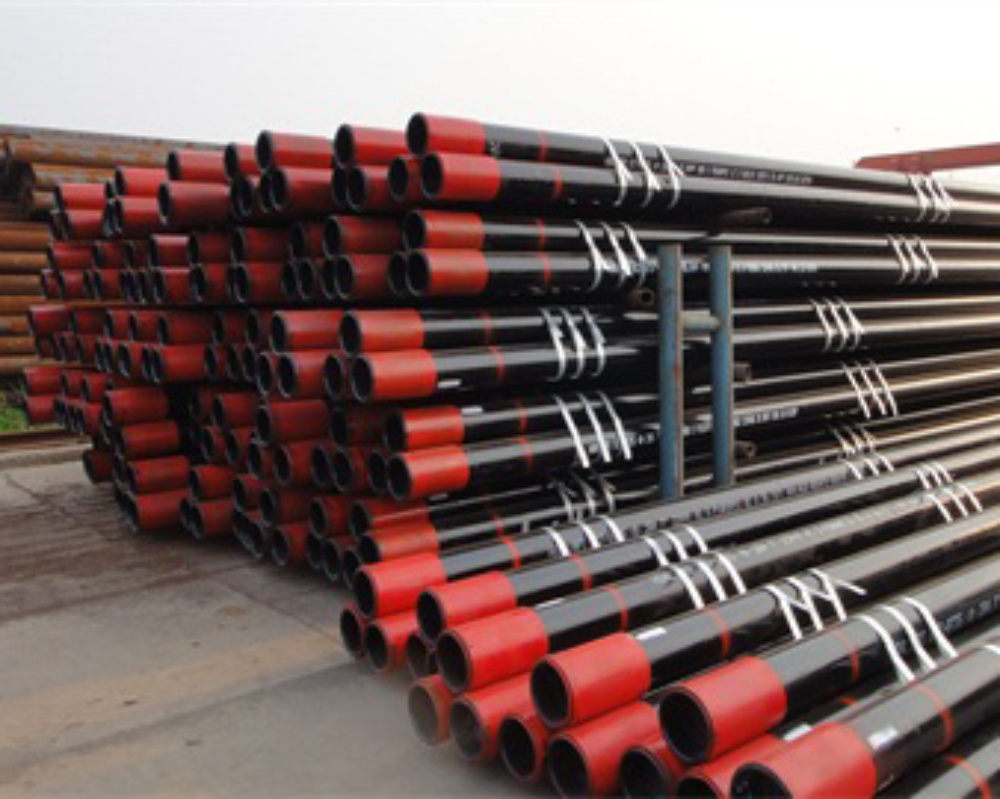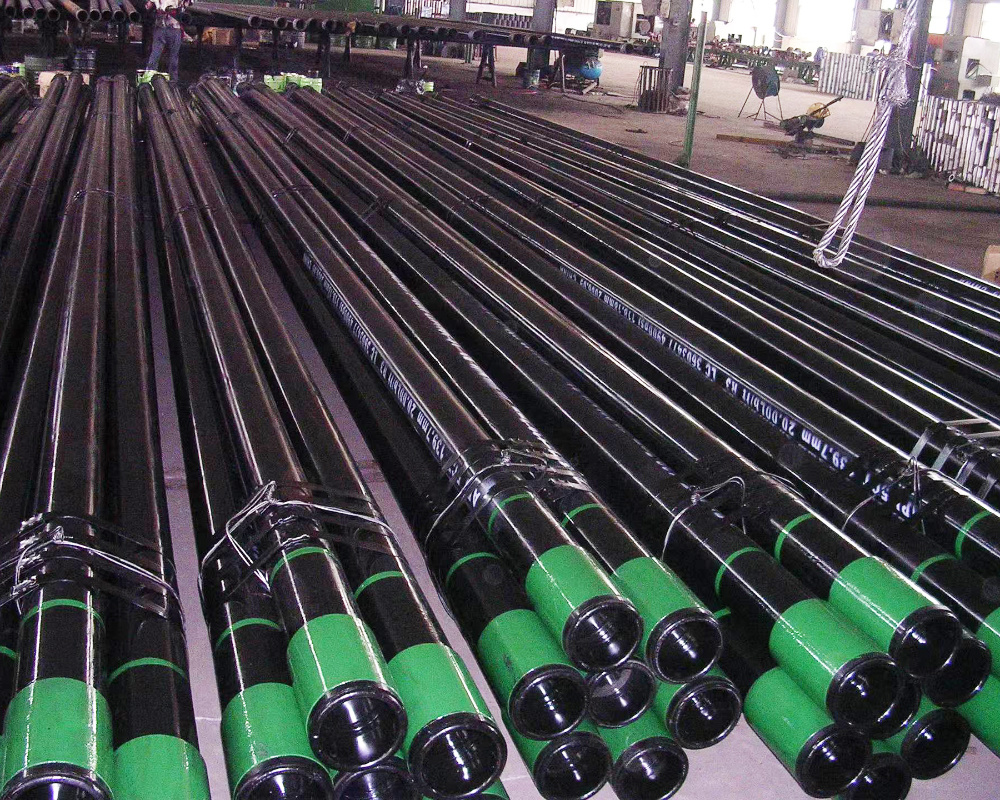Why Seamless Steel Pipes are Essential for Structural Integrity
Why Seamless Steel Pipes are Essential for Structural Integrity
Table of Contents
Introduction to Seamless Steel Pipes
What are Seamless Steel Pipes?
Advantages of Seamless Steel Pipes
Manufacturing Process of Seamless Pipes
Applications of Seamless Steel Pipes in Construction
Seamless vs. Welded Pipes: A Comparative Analysis
Challenges in Using Seamless Steel Pipes
The Future of Seamless Steel P
Why Seamless Steel Pipes are Essential for Structural Integrity
Table of Contents
- Introduction to Seamless Steel Pipes
- What are Seamless Steel Pipes?
- Advantages of Seamless Steel Pipes
- Manufacturing Process of Seamless Pipes
- Applications of Seamless Steel Pipes in Construction
- Seamless vs. Welded Pipes: A Comparative Analysis
- Challenges in Using Seamless Steel Pipes
- The Future of Seamless Steel Pipes in Construction
- Conclusion
- FAQs
Introduction to Seamless Steel Pipes
Seamless steel pipes are critical components in many industrial and structural applications. Their unique manufacturing process creates a robust product that is increasingly favored for its superior strength, durability, and reliability. In this article, we will explore why seamless steel pipes are essential for maintaining structural integrity and how they outperform traditional welded pipes.
What are Seamless Steel Pipes?
Seamless steel pipes are cylindrical tubes made from solid steel billets, which are heated and then drawn into a pipe without any welding seams. This process results in a uniform pipe with no weak points, making it ideal for high-pressure applications. The absence of seams reduces the risk of failure under extreme conditions, ensuring that structures remain safe and intact.
Key Characteristics of Seamless Steel Pipes
- **Strength and Durability**: Seamless pipes boast high tensile strength, making them suitable for harsh environments.
- **Corrosion Resistance**: Various coatings can enhance their resistance to corrosion, extending their lifespan.
- **Versatility**: They are available in various sizes and grades, making them versatile for different applications.
Advantages of Seamless Steel Pipes
The benefits of using seamless steel pipes are numerous, making them the preferred choice in many applications.
Higher Pressure Tolerance
Seamless steel pipes can withstand higher pressures than their welded counterparts. This characteristic is crucial in industries such as oil and gas, where pipes transport fluids at extreme pressures.
Reduced Risk of Leaks
With no seams, the chances of leaks occurring are significantly minimized. This is especially important in applications involving hazardous or flammable materials, where leaks could have catastrophic consequences.
Improved Structural Integrity
Seamless pipes maintain their strength and shape under heavy loads, contributing to the overall structural integrity of buildings and infrastructure. Their uniformity ensures consistency, making them reliable for critical applications.
Cost-Effectiveness
While the initial cost of seamless pipes may be higher, their longevity and lower maintenance needs can lead to cost savings over time. Investing in seamless steel pipes can be a financially sound decision for many projects.
Manufacturing Process of Seamless Pipes
Understanding the manufacturing process of seamless steel pipes can help appreciate their quality and reliability.
Steel Billet Heating
The manufacturing process begins with the heating of solid steel billets to a high temperature. This step is crucial as it softens the steel, making it malleable for the subsequent shaping process.
Piercing
Once the billets are heated, they undergo a piercing process. A sharp tool creates a hole through the center of the billet, transforming it into a hollow tube.
Elongation
Next, the hollow tube is elongated by being drawn through a series of mandrels. This process shapes the pipe to its desired diameter and thickness.
Finishing Processes
After the pipes are formed, they go through several finishing processes, including heat treatment, hydrostatic testing, and surface treatment. These steps ensure the pipes meet industry standards and specifications.
Applications of Seamless Steel Pipes in Construction
Seamless steel pipes find applications across a myriad of industries, particularly in construction.
Oil and Gas Industry
In the oil and gas sector, seamless pipes are vital for transporting crude oil and natural gas from extraction points to refineries. Their ability to withstand high pressures and corrosive environments makes them indispensable.
Water Supply Systems
Seamless steel pipes are also used in water supply systems due to their durability and resistance to leaks. They ensure a reliable supply of water in municipal systems.
Structural Applications
In construction, seamless pipes serve as structural supports, enhancing the strength and stability of buildings and bridges. Their uniformity and strength contribute to the overall integrity of structures.
Automotive Industry
The automotive industry utilizes seamless pipes in the manufacturing of various components, including exhaust systems and frame structures. Their robustness is crucial for vehicle safety and performance.
Seamless vs. Welded Pipes: A Comparative Analysis
When choosing between seamless and welded pipes, it is important to understand the key differences in their properties and applications.
Manufacturing Process
Welded pipes are formed by rolling flat steel sheets into cylindrical shapes and welding the edges. This process creates a seam, which can be a potential weak point. In contrast, seamless pipes are forged from solid billets, resulting in a uniform structure without seams.
Strength and Durability
Seamless pipes generally exhibit greater strength and durability compared to welded pipes. Their lack of seams means fewer weak points, making them more suitable for high-pressure applications.
Cost Considerations
Welded pipes are typically less expensive due to their simpler manufacturing process. However, the long-term performance and safety benefits of seamless pipes often justify their higher price.
Challenges in Using Seamless Steel Pipes
Despite their advantages, seamless steel pipes come with certain challenges.
Higher Initial Cost
The manufacturing process of seamless pipes is more complex, resulting in a higher initial cost compared to welded pipes. This can be a deterrent for some projects with tight budgets.
Availability
Seamless pipes may not always be readily available in all sizes and specifications, potentially causing delays in construction timelines.
Technical Knowledge Requirement
Utilizing seamless pipes requires a higher level of technical knowledge regarding their specifications and applications. Ensuring that the right type of seamless pipe is used in the right context is essential for maintaining structural integrity.
The Future of Seamless Steel Pipes in Construction
As technology progresses, the future of seamless steel pipes looks promising. Innovations in manufacturing processes and materials are expected to enhance their properties further.
Advancements in Manufacturing Technology
New manufacturing technologies, including automation and precision engineering, are expected to improve the efficiency and quality of seamless pipes. These advancements could lead to cost reductions and increased availability.
Increased Demand Across Industries
As industries prioritize safety and efficiency, the demand for seamless steel pipes is likely to grow. Their application in renewable energy projects, such as wind and solar, indicates a shift towards sustainable construction practices.
Conclusion
In conclusion, seamless steel pipes play a vital role in ensuring structural integrity across various applications. Their superior strength, durability, and resistance to leaks make them the preferred choice in demanding environments. While challenges exist, the long-term benefits of seamless pipes far outweigh the initial costs. As industries continue to evolve, the importance of seamless steel pipes will only increase, solidifying their place as an essential component in modern construction.
FAQs
1. What is the primary advantage of seamless steel pipes over welded pipes?
The primary advantage of seamless steel pipes is their lack of seams, which reduces the risk of leaks and increases their strength and durability.
2. Are seamless steel pipes more expensive than welded pipes?
Yes, the manufacturing process of seamless pipes is more complex, resulting in a higher initial cost compared to welded pipes.
3. In what industries are seamless steel pipes commonly used?
Seamless steel pipes are commonly used in industries such as oil and gas, water supply, construction, and automotive.
4. How are seamless steel pipes manufactured?
Seamless steel pipes are manufactured by heating solid steel billets, piercing them to create a hollow tube, and then elongating and finishing them to meet specifications.
5. What are the challenges associated with using seamless steel pipes?
Challenges include higher initial costs, potential availability issues in specific sizes, and the need for technical knowledge regarding their specifications and applications.
TAG:
Related Posts
Understanding Carbon Steel Seamless Pipes: Essential Insights for Construction Professionals
Carbon steel seamless pipes are an integral component in the construction and decorative materials industry, particularly in the realm of building pipes. These pipes are manufactured without seams, which makes them highly durable and reliable for various applications. Understanding their properties, advantages, and applications can greatly enhance decision-making for professionals in the field.
On









